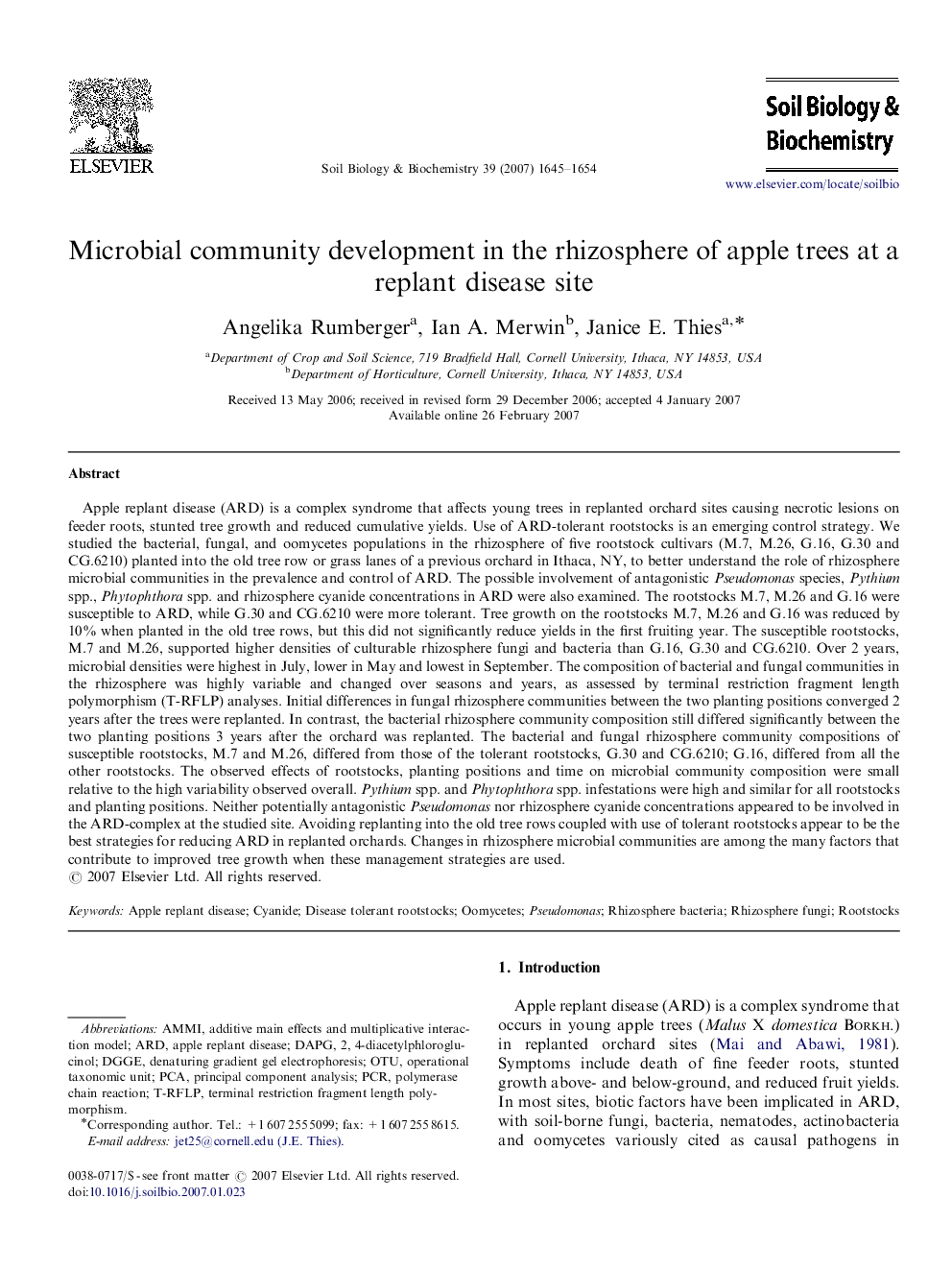| کد مقاله | کد نشریه | سال انتشار | مقاله انگلیسی | نسخه تمام متن |
|---|---|---|---|---|
| 2026228 | 1070023 | 2007 | 10 صفحه PDF | دانلود رایگان |

Apple replant disease (ARD) is a complex syndrome that affects young trees in replanted orchard sites causing necrotic lesions on feeder roots, stunted tree growth and reduced cumulative yields. Use of ARD-tolerant rootstocks is an emerging control strategy. We studied the bacterial, fungal, and oomycetes populations in the rhizosphere of five rootstock cultivars (M.7, M.26, G.16, G.30 and CG.6210) planted into the old tree row or grass lanes of a previous orchard in Ithaca, NY, to better understand the role of rhizosphere microbial communities in the prevalence and control of ARD. The possible involvement of antagonistic Pseudomonas species, Pythium spp., Phytophthora spp. and rhizosphere cyanide concentrations in ARD were also examined. The rootstocks M.7, M.26 and G.16 were susceptible to ARD, while G.30 and CG.6210 were more tolerant. Tree growth on the rootstocks M.7, M.26 and G.16 was reduced by 10% when planted in the old tree rows, but this did not significantly reduce yields in the first fruiting year. The susceptible rootstocks, M.7 and M.26, supported higher densities of culturable rhizosphere fungi and bacteria than G.16, G.30 and CG.6210. Over 2 years, microbial densities were highest in July, lower in May and lowest in September. The composition of bacterial and fungal communities in the rhizosphere was highly variable and changed over seasons and years, as assessed by terminal restriction fragment length polymorphism (T-RFLP) analyses. Initial differences in fungal rhizosphere communities between the two planting positions converged 2 years after the trees were replanted. In contrast, the bacterial rhizosphere community composition still differed significantly between the two planting positions 3 years after the orchard was replanted. The bacterial and fungal rhizosphere community compositions of susceptible rootstocks, M.7 and M.26, differed from those of the tolerant rootstocks, G.30 and CG.6210; G.16, differed from all the other rootstocks. The observed effects of rootstocks, planting positions and time on microbial community composition were small relative to the high variability observed overall. Pythium spp. and Phytophthora spp. infestations were high and similar for all rootstocks and planting positions. Neither potentially antagonistic Pseudomonas nor rhizosphere cyanide concentrations appeared to be involved in the ARD-complex at the studied site. Avoiding replanting into the old tree rows coupled with use of tolerant rootstocks appear to be the best strategies for reducing ARD in replanted orchards. Changes in rhizosphere microbial communities are among the many factors that contribute to improved tree growth when these management strategies are used.
Journal: Soil Biology and Biochemistry - Volume 39, Issue 7, July 2007, Pages 1645–1654